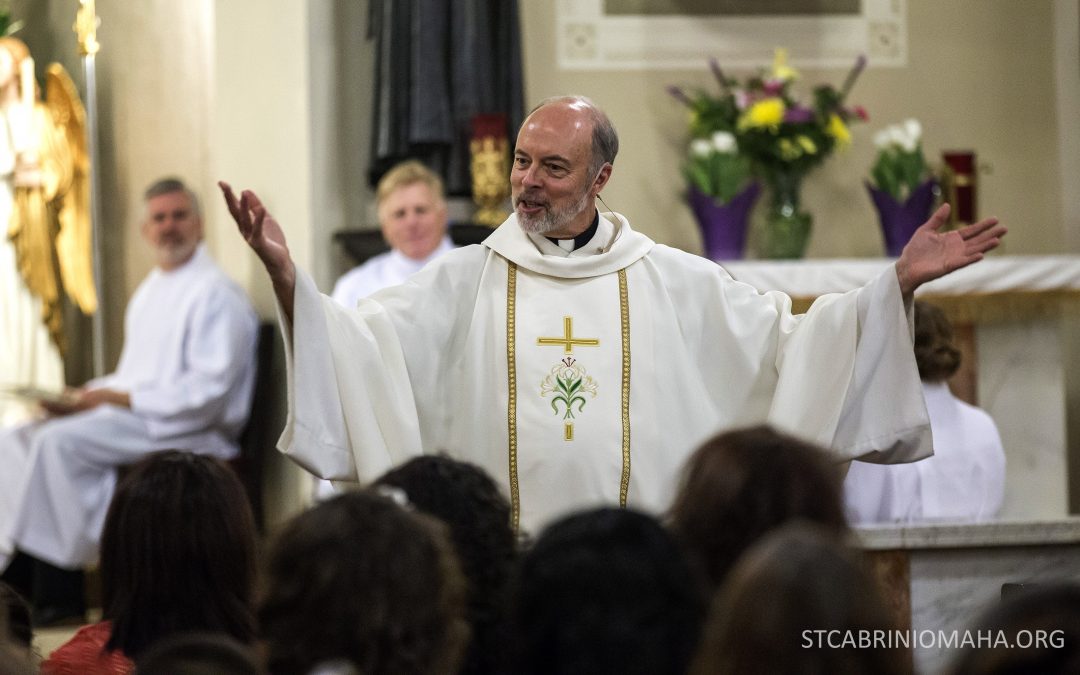Dear Friends,
The Christmas season ended on January 7, though in some churches the remnants of Christmas remain. The three CUES schools gathered at Holy Name Church on Wednesday of last week to celebrate Mass for Catholic Schools Week together and, in their church, the Poinsettias were still front and center. I asked Fr. Vitalis about them and he said the women in the parish took such good care of them that they would not die. He could not just throw them out so they remained a part of the church decoration. The question now becomes how poinsettias will be incorporated into the church Lent decorations. Perhaps, Fr. Vitalis suggested, they will put ashes on the flowers. Christmas quickly gives way to Lent.
Next week, we begin Lent with our ancient tradition of applying ashes in the sign of the cross on our foreheads. The Scriptures frequently refer to ashes as a sign of repentance for sin or mourning (Esther 4:3, Job 42:5-6, Jonah 3:4-6, Ezekiel 9:4, etc.), and while the Lenten ashes are ashes of mourning over sin, they are also “hopeful ashes,” made in the sign of the Christ’s cross, our only hope.
The passage in Ezekiel is particularly interesting: “And the Lord said to him, ‘Pass through the city, through Jerusalem, and put a mark on the foreheads of the men who sigh and groan over all the abominations that are committed in it’.” The Hebrew word for “mark” is “tav” and it was written as a sort of cross-shaped letter, leading the Church Father Tertullian to remark that God had given to Ezekiel “the very form of the cross.”
It is always a moving experience for priests, deacons, and the laity who assist us, to press our thumbs into the soft, burnt palm branches made ashes, look into the eyes of our fellow parishioners and utter the reminder: “Remember, you are dust and to dust you shall return.” One by one, we remind them of their mortality, remind them that one day they will die. Their bodies will be placed in the ground, but in forming the cross, we remind them of the hope of Christ. One by one, we proclaim both death and life to them.
Ash Wednesday stands as one day on which we are brought to remember what we would just as soon forget. As a human person, I would often prefer to forget my own mortality, but I dare not do so. I love some of the images of Lent that come from our Orthodox brothers and sisters who refer to Lent as a “bright sadness.” The Orthodox poetry of Lent reminds us “that we have fallen short, that we are not the people we should be, that we have become entirely focused on aggrandizing and sating ourselves, and as a result these ancient services engender a sense of sorrow. But the sense of freedom we experience as we relinquish this terrible self-centeredness produces joy in our hearts. If we do not to some extent attain to this joy-through-mourning, we have entirely missed the point of Lent.”
That description comes from an Orthodox priest, Fr. Schmemann. He goes on to describe the goal of Lenten discipline: “Little by little, we begin to understand, or rather to feel, that this sadness is indeed “bright,” that a mysterious transformation is about to take place in us. It is as if we were reaching a place to which the noises and the fuss of life, of the street, of all that which usually fills our days and even nights, have no access – a place where they have no power. All that which seemed so tremendously important to us as to fill our mind, that state of anxiety which has virtually become our second nature, disappear somewhere and we begin to feel free, light and happy. It is not the noisy and the superficial happiness which comes and goes twenty times a day and is so fragile and fugitive; it is a deep happiness which comes not from a single and particular reason but from our soul having, in the words of Dostoevsky, touched “another world.” And that which it has touched is made up of light and peace and joy, of an inexpressible trust.”
Sobering as the task may be to engage in our Lenten practices, our hands and hearts must set to it with “bright sadness” – the joy of dying to self in the hope of eternal life, the cross in the midst of ashes.
Peace,
Fr. Damian



